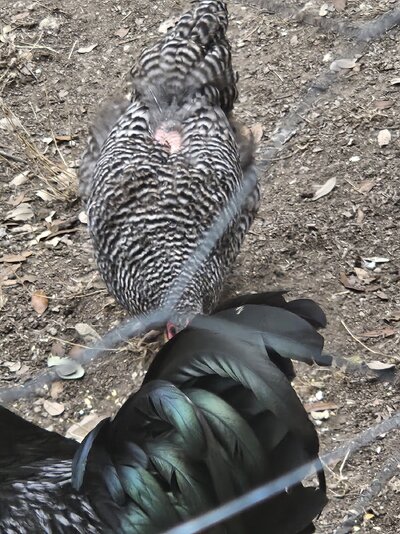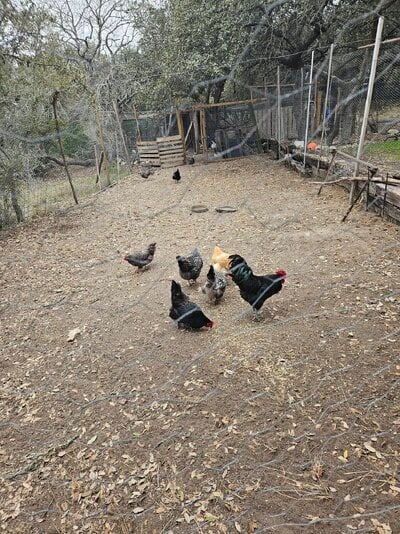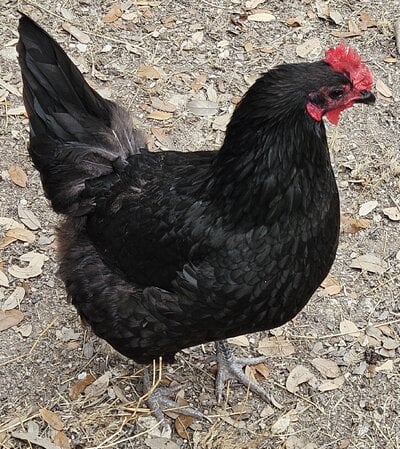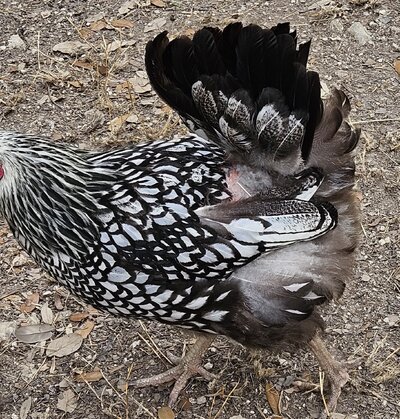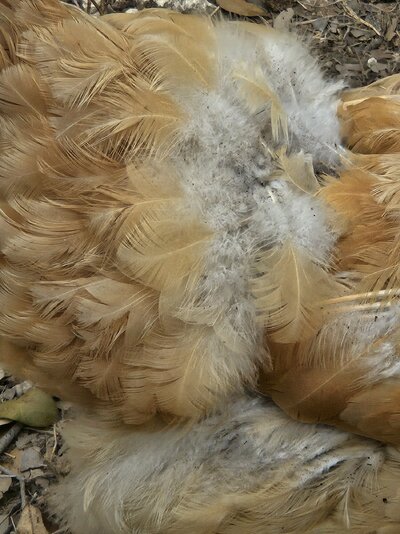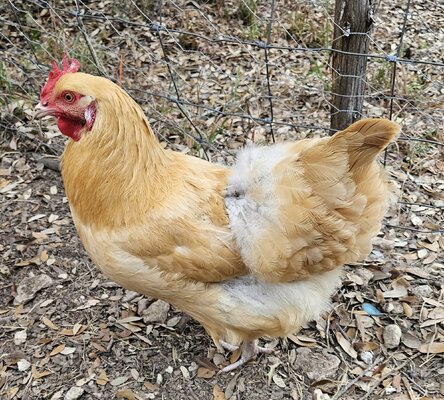I have a flock of 11 hens and a Rooster. They will be a year old the end of next month. 4 of them have developed bald spots on their backs at the base of their tails. The buff orpington's feather deformity seems different and this has been developing for a while.
Is this pecking, mites, or maybe rough Roo treament. It doesn't look like moulting. This is my third flock, but have not yet seen this, never had mites, so unsure. There does seem to be a trend here, though. The hens effected are at the lower end of the pecking order, especially the barred rock with the largest spot that most recently developed almost overnight. They're nesting routine seems to have changed, since it started too. I have 7 nests,but rather than using 2 or 3 of them, they are all laying in the same nest. Could it be possible that impatient hens are pecking at the layer?
Is this pecking, mites, or maybe rough Roo treament. It doesn't look like moulting. This is my third flock, but have not yet seen this, never had mites, so unsure. There does seem to be a trend here, though. The hens effected are at the lower end of the pecking order, especially the barred rock with the largest spot that most recently developed almost overnight. They're nesting routine seems to have changed, since it started too. I have 7 nests,but rather than using 2 or 3 of them, they are all laying in the same nest. Could it be possible that impatient hens are pecking at the layer?

